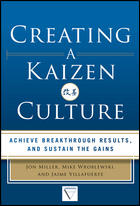Bill Arbogast, our 2013 Quality Professional of the Year, almost became an architect.
That had been his plan in college, and he graduated with an architecture degree from Philadelphia’s Temple University in 1976. But at the time, architecture jobs were scarce, and graduates had to work under a principal for a few years before taking the exam. Unfortunately, he was just working for the experience—not a paycheck—and this was “before living in your parents’ basement was in vogue,” Arbogast says, so he decided to try something else. He found that a company called AMP Inc. was hiring, so he neatly filled out an application and received a call from the company later that day—it seems his terrific architect’s handwriting caught their attention.
And so, though he did do some houses on the side, he gradually slipped away from architecture, and eventually, into quality. This career took a few winding turns, but today, he is the global quality systems manager in Global Operations for TE Connectivity, a $13 billion company with U.S. headquarters in Berwyn, PA, in addition to being an ASQ certified quality auditor and quality manager. His work in quality has earned him the top spot as our Quality Professional of the Year.
The Early Years
Although architecture and manufacturing may not seem to have a lot of overlap, Temple University’s architecture program actually did emphasize engineering. So, armed with his neat handwriting and engineering education, his career at AMP Inc. began. The company was later bought by Tyco International and became part of the Tyco Electronics division. This division was spun off from Tyco International in 2007, and four years later, the name changed to TE Connectivity. And just as the company has changed hands, Arbogast has changed roles within the company as well.
Before joining the quality side, he spent about 12 years as a development engineer, then working up to project engineer. And once again, his career took a turn. With his young family, Arbogast decided he needed to cut down on his traveling, working 10-hour days and weekends, and find something different. As it happened, there was an opening in the quality department. He took it. And as with so many things, he ended up finding a good match.
“At that time, the door to quality was usually through engineering and manufacturing,” Arbogast says. And at first, he didn’t quite fit in. When he joined the quality department in 1992, Arbogast was only in his 30s—making him by far the youngest person there—and thought it would be temporary. He didn’t know anything about quality, he says, and, as with other members of the development department, he thought the quality department just put up roadblocks. “As a development engineer, we tried to find a way to get around those quality guys,” Arbogast says. “Now I was one of those guys.”
One of Those Quality Guys
But, by studying and learning all he could, Arbogast did well in his new quality role. He found he enjoyed hunting down a solution and solving problems. And being exposed to so many different areas of the company taught him to consider different interests at play within an organization. As his career progressed, he developed a quality philosophy, and, equally important, learned to communicate with management.
“Quality people—I’m not putting them down because I am one—tend to speak a different language, with PPMs and Sigmas, and [management] looks at you like you’re from outer space. One of my objectives to get a seat at the table is to speak their language. They speak USD. They talk money. So I try to turn our quality objectives into dollars. You talk to them about scrap PPM and customer returns, you’re talking a different language. You relate that to them in dollars and now they understand. Now they say they want to fix it.
“You get a seat at that senior management table by talking their language rather than sitting off to the side talking geek-speak. My philosophy is, let’s all speak the same language.”
The 2013 Professional of the Year At a Glance
|
Obviously, certification is not a minor task. As anyone who’s ever gone through a certification will likely agree, ISO is a big deal. During a roundtable at the Harvard Business School a few years ago, Arbogast learned that the most published business document in history is ISO 9001.
He explains, “The ISO 9000 model is a business model that tells you how to run your business. It isn’t just a quality management system; it’s a business management system.”
With any manufacturing process, he says it’s important to review the system. “Ask the people, ‘How do you know your processes are effective? What kind of measurements have you put in place to determine whether or not your process is effective?’” Arbogast says. “After you’ve implemented plans, ask, ‘Are you achieving process improvements?’”
The idea is to improve bit by bit, one process at a time. Meanwhile, Arbogast was part of a team to improve the overall ISO certification process itself.
A New Model
While ISO may improve business, it can be a costly proposition. The costs of getting certified can throw off a budget. So, Arbogast and his team decided to try something new.
His team asked three certification bodies to see if they would be interested in working on a multisite audit certificate. They would allow internal auditors to certify a company by working in partnership with the certification body. LRQA stepped in. The companies arranged for staff at what was then AMP to be trained to LRQA audit standards. Les Shaffer, the assessor at LRQA, says that the system took some adjusting to at first, but it does work better for both parties by saving the companies money and allowing LRQA to develop a partnership with them.
Members of LRQA and TE staff believe that this 1996 implementation might have been the first enterprise audit certificate issued. It proved to be extremely successful, and TE Connectivity estimates that it has saved the company $320,000 every year. And the idea has spread—LRQA now offers enterprise audit certificates to other companies as well.
A Real Professional
And Arbogast managed to achieve this new model without any drama. When asked to describe him, sources often chose the same word: professional. He displays a sense of calm, of rising above, of working with a sense of fairness and objectivity. And, in a somewhat backhanded compliment, they often described him as “not like some auditors I’ve worked with.”
“He is very good at not letting his opinion rule the day,” says Greg Snyder, senior manager, quality assurance of TE’s DataComm business in North America. “I’ve had interactions with dozens of auditors over the years, and the worst ones bring their opinions to the table. In my opinion, they should be helpful, auditing to the standard, not what they think or their personal background. I’ve had noncomformance notes from auditors that said, ‘This is not the way we did it at the last company I was at, so it’s wrong,’” Snyder says. “Bill didn’t necessarily need to see the same approach to meeting the requirements. He understands our systems, applies what he knows day in and day out. Bill is very consistent. When it comes to quality, consistency is very important. Consistency is the key, and Bill demonstrates that day in and day out.”
Kurt Peiffer, a senior quality manager at TE Connectivity, echoes this sentiment. “Bill is a very square and honest person. He evaluates what the requirements are, no matter what standard you’re being audited against. He’s very knowledgeable to the standards. If there is an issue, he’ll explain why it is an issue, an issue where we’re not fully complying or partly complying. He’s very objective that way, which is good in an auditor. Some auditors can have their personal preference, in the audits I’ve been in over the years. He’s professional. He fulfills that term. When you think of a real professional, you can think of Bill.”
And in addition to his professional demeanor, he also has a reputation as a good leader. Peiffer continues, “He’s created an atmosphere where his folks really work well together. He will be able to have one person that has a strong skill set work with someone who may not have that strong of a trait, and maybe not bring that person up to be a total master, but will help that individual learn and grow.”
Being a good auditor, a professional in all aspects of work, as well as a good manager seems like a rare combination. But in addition to his well respected work in quality, Arbogast has also founded a 501(c) 3, the Arbogast Foundation, and Saint Arbogast for Miracle Kids. So in addition to helping companies improve, he also raises money to help kids get better. It’s easy to see why he is well-liked.
And though he did not end up with a career in architecture, if he had taken that career path, it seems clear that his personality and professionalism would have helped him there as well. The architecture world missed out.
Podcast: Listen to Quality's 2013 Professional of the Year













